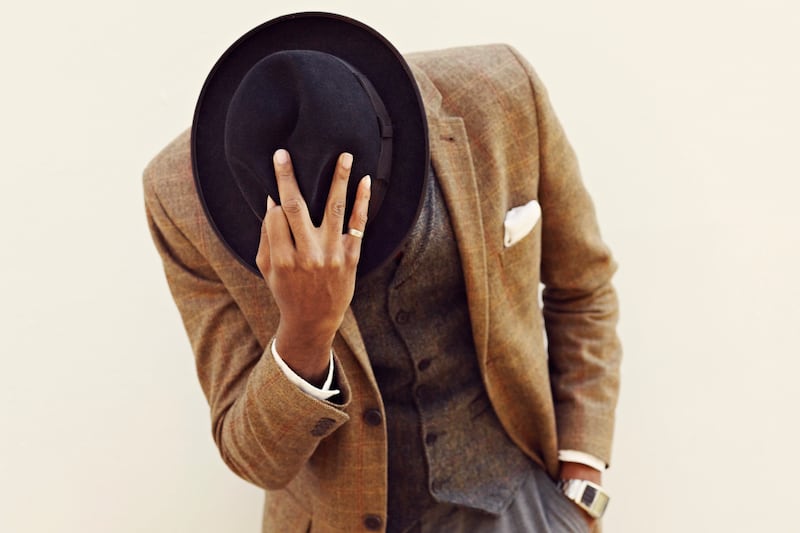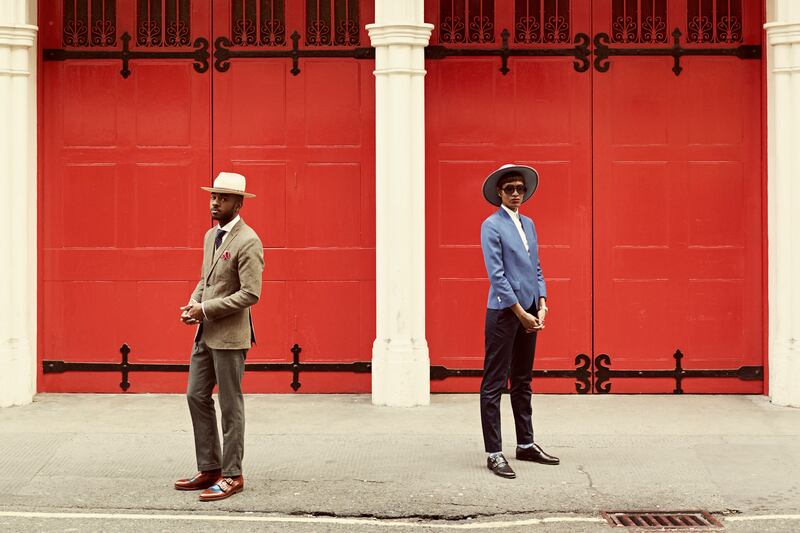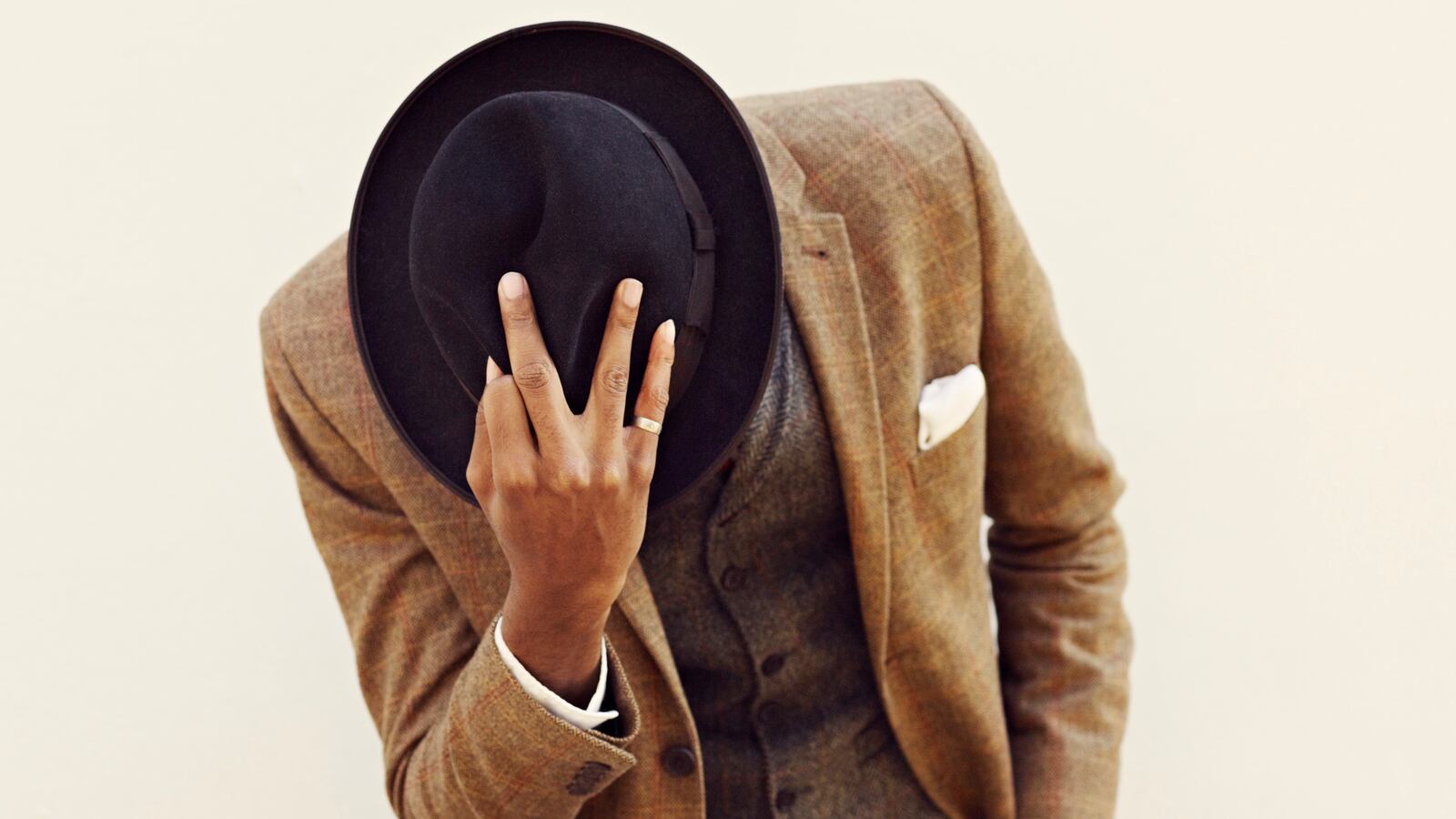
At this week’s London Collections: Men’s event, young spectators dressed in sharp suits and pork pie hats appear to have walked straight out of the Rudeboy era of the late 1970s.
The look—dapper suits dressed up with an edge of color paired with funky haircuts and cheeky shirts, all downplayed to be a bit more street—was first seen in the 1960s when the so-called Rudeboy movement emerged in the shanty towns of Jamaica. The look was revived in England in the 1970s and 1980s. Now, it’s back, both on the streets of the British capital and in a new photography exhibit, The Return of the Rudeboy, open at Somerset House through August 25.
During its early incarnation, slick dress became the uniform for the violent disaffected youth taking to the streets. The Rudeboy phenomenon has always been interconnected with music, and when the style emerged, these slick dressers looked to American jazz, R&B, and even local gangsters for inspiration.
The portraits in the current exhibition were taken over the past year in urban settings around the U.K. showing how the look lives on today. One man strides past worn garage doors; another is photographed in front of an old, brick school, flying through the air in a suit and chained waistcoat and bright orange socks, with a skateboard spinning to the ground.
One imagines from the locations of the photos that the young men and women subjects, both then and now, were determined to dress their best in cramped bathrooms and humble households, emerging undeterred in jazzed up suits and finely polished shoes to rule the streets in a look made their own.
Suits are given a subversive twist—worn with colorful shoes and trousers, polka-dot scarves, feathers hanging from a beautifully coiffed male haircut (Rudeboy looks are always finished with a hat or fine hairdo)—and make up what organizers say is an overlooked sartorial subculture.
RELATED: The Rudeboy Is Back! (Photos)

Bringing things up to date, the photographer and filmmaker Dean Chalkley and the creative director Harris Elliott spent the past year photographing 60 individuals who embody the style.
Michael Jackson and Reggae are part of the soundtrack that plays in the background, composed of a mix of the exhibition subjects’ favorite tunes, providing an immersive experience for the show.
The music and the dress of the Rudies has popped back up in popular culture again and again since the movement was born, with the Mods and Punks adopting some of the style elements. Jamaican music has influenced a number of other music scenes, including 2 Tone that came out of Punk in Britain and helped bring the Rudeboy style back in the 1980s.
Today performers like Pharrell embody parts of the movement’s aesthetic, which might have helped usher the trend back in.
Emphasizing the attention to detail among this group, the exhibition set includes bespoke brown suitcases left open to reveal portraits of more hipsters and hatboxes. In one room, an old-fashioned barber’s chair and pop-up hairdressing salon are part of the décor…and are open to the public for a shave and cut on select days. And a Duke box and select images of musicians show the connection between music, performance, and the Rude Boy culture.
The exhibition also includes a number of outfits displayed on mannequins that lends the show a performance feel. Shiny shoes dressed up with tassels, a military-style jacket decked in kitsch bling, including sunglasses and chains, a performer-meets-military street aesthetic that is always chic, never shabby.
According to the organizers, the exhibition “aims to depict a collective of sharply dressed individuals who exemplify an important yet undocumented sub culture and the style and attitude of a growing number of people that embody the look today.”






